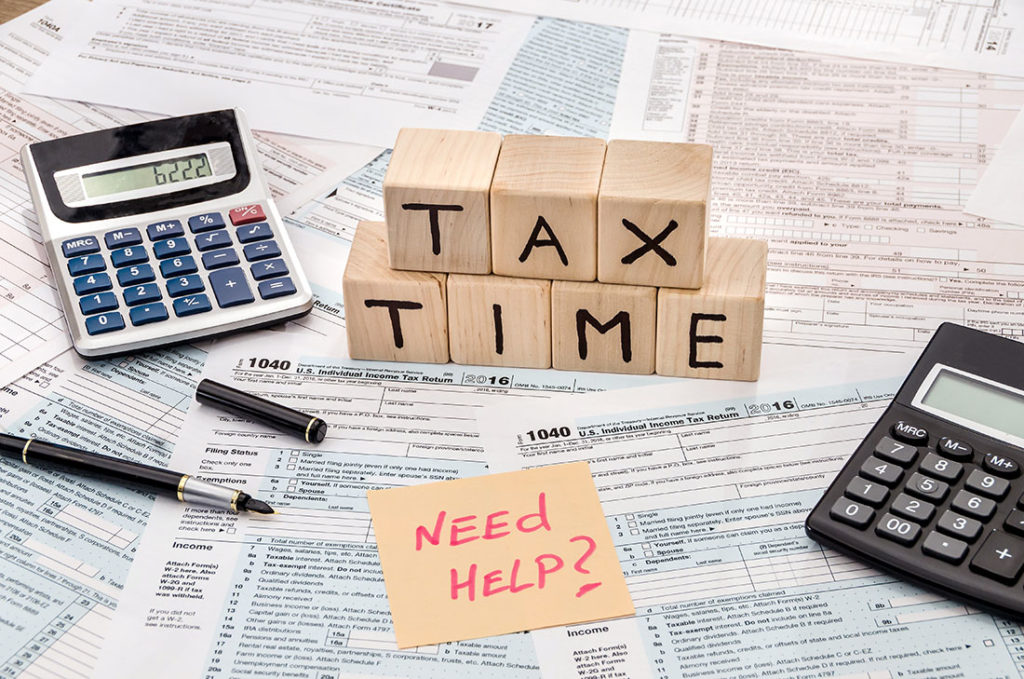New users of Microsoft Dynamics 365 Business Central may be confused by the way the Tax Setup windows look, but it couldn’t be simpler! The following is a summary of the Tax Setup windows:
- Tax Setup Window – the company tax settings. This is completed during the Assisted Setup and sets up the sales tax wizard.
- Tax Groups – assigned to items that you buy and sell. There is Taxable and Nontaxable as an option out of the box, but that can be broken out further if needed (Furniture, Labor, Supplies, etc.). These are also defined during the Assisted Setup and the sales tax wizard
- Tax Area Codes – calculates tax on sales/purchase documents based on the customer/vendor. These are a combination of city, county, and state codes as applicable
- Tax Details – different combinations of tax group and tax area codes to establish rates
Getting Started
The easiest way to get started is to use the Tax Jurisdictions list. This page will allow you to define the new codes and assign percentages.
First, search for Tax Jurisdictions.
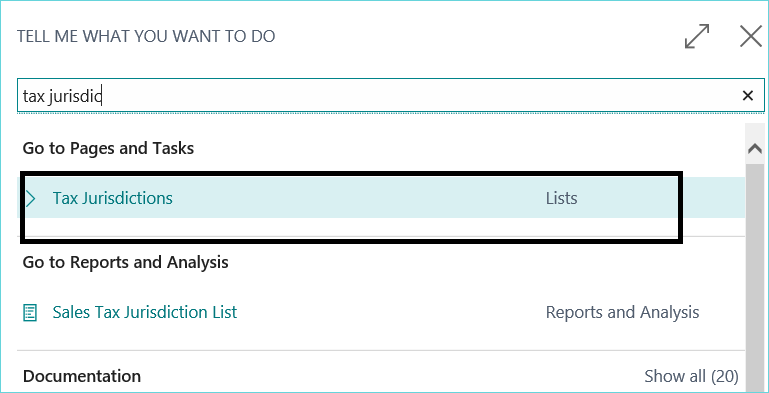
Click New and a new row will open so you can enter the new code directly in here.
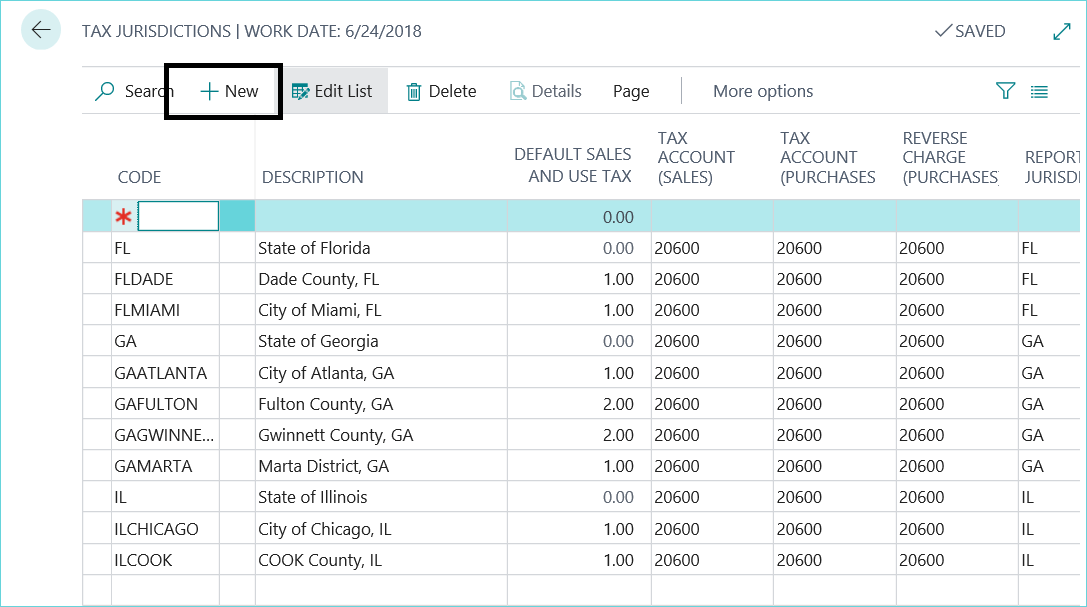
In this example, we will create taxes for Austin, TX.
First, create the state tax code and enter a rate, if applicable. Make sure the GL accounts are correct and fill in the Reporting Jurisdiction. In this example, I left the state tax with a 0.00 rate.

Click New and complete the same steps for the city. In this example, I created a new code for Austin and assigned a tax rate of 3%. I also assigned Austin to TX as the reporting jurisdiction.

Now we need to create the Tax Area Code (this is the code that will be assigned to customer/vendors).
Search for Tax Area to open the Tax Areas list.
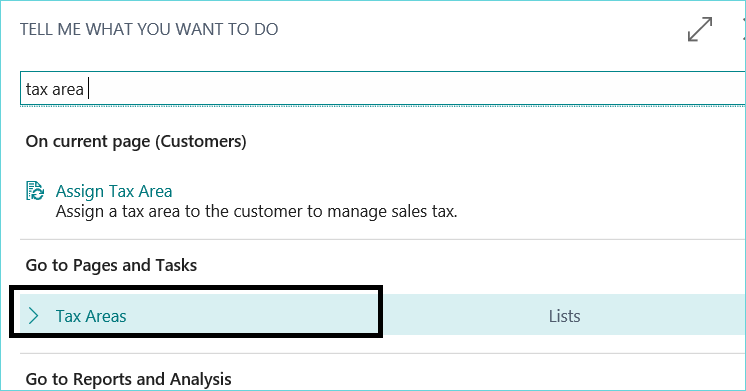
Click New.
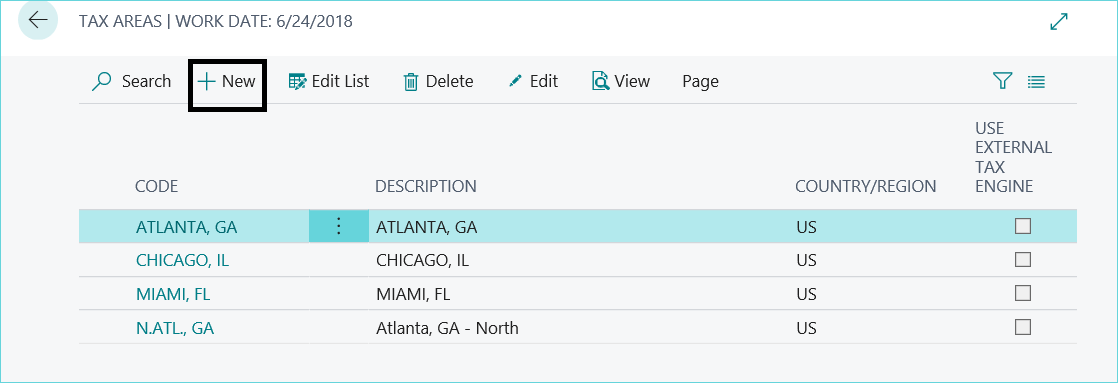
Enter the code. In this example, I named it AUSTIN, TX since this code will be a combination of the AUSTIN and TX codes.
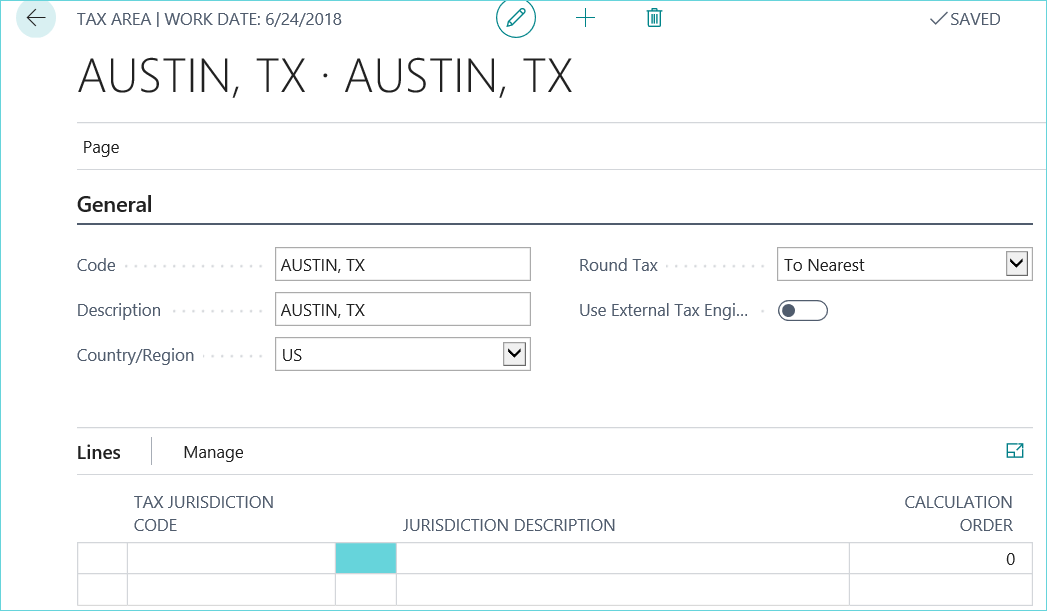
Select the Tax Jurisdiction codes that apply to this combination.
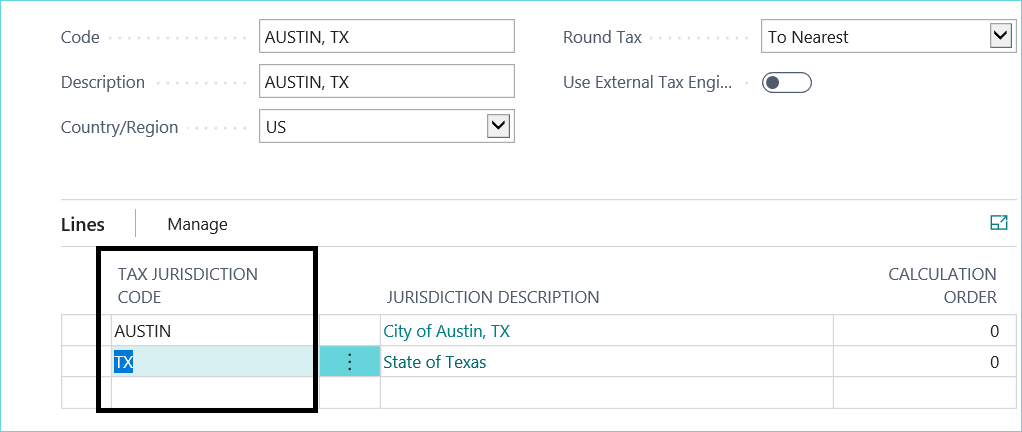
Verify the new Tax Code is assigned to all Tax Groups that may be used in the Tax Details window with the appropriate rate. Search for tax details.
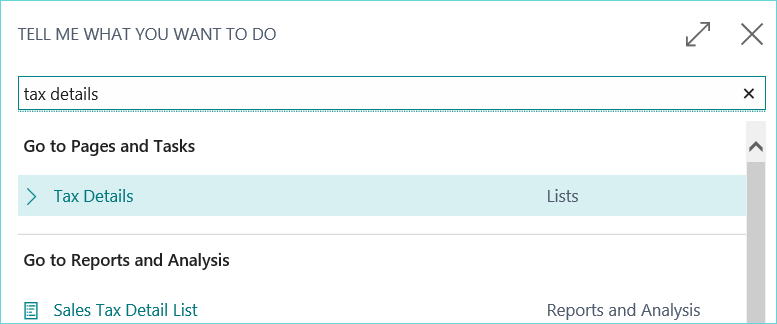
In this example, the new tax is assigned to the NONTAXABLE tax group with 0.00 rate. It is also listed with a blank Tax Group so all others will use the 3.0% rate. If I wanted a different tax group (e.g. LABOR) to use a different rate then I would need to click New and add the additional line.
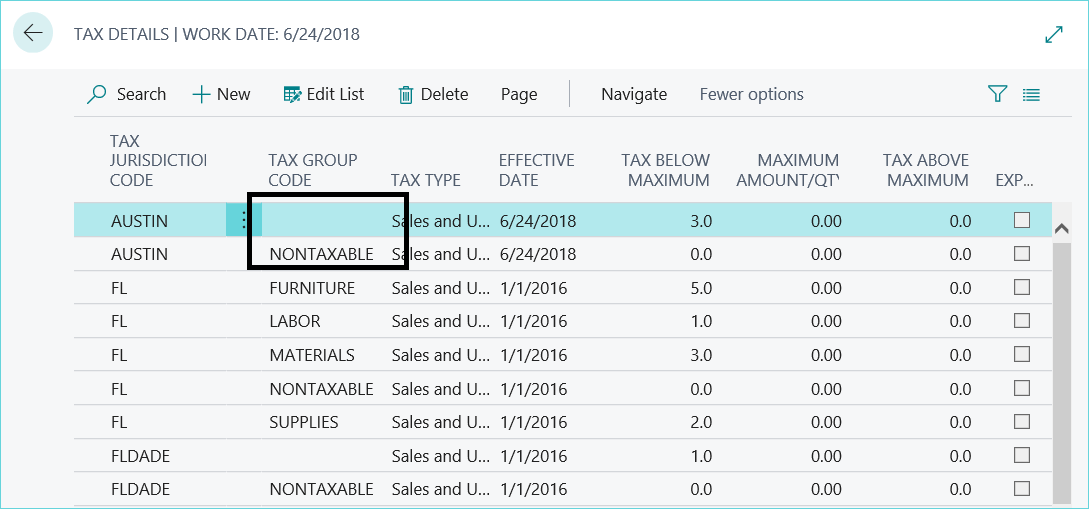
The final step is to assign the Tax Area Code to the customers. Open the customer card and assign the new tax area code. If you would like invoices to default as taxable when using this customer, be sure to turn on the Tax Liable field as well.
The Tax Area Code can also be mass assigned by opening the list of customers and using the Edit in Excel option.
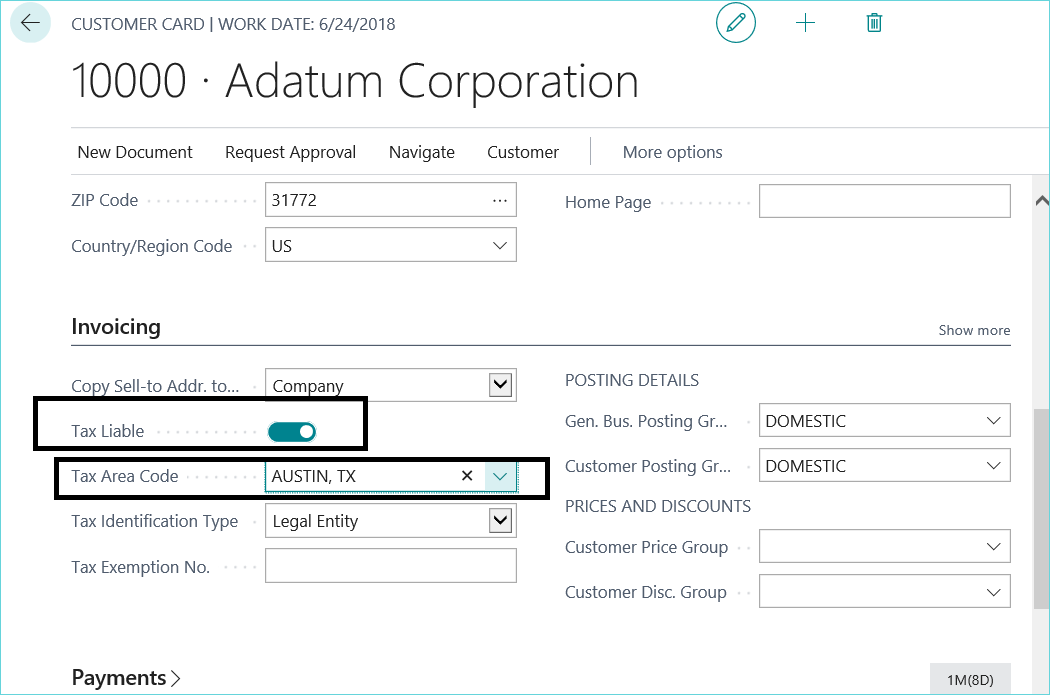

The next invoice created for this customer has the Austin, TX Tax Area code as the default.
We are using the Tax Group Code FURNITURE in this example. Since we left the Tax Group Code blank in the Tax Details window it automatically applied the 3% tax rate to this invoice:
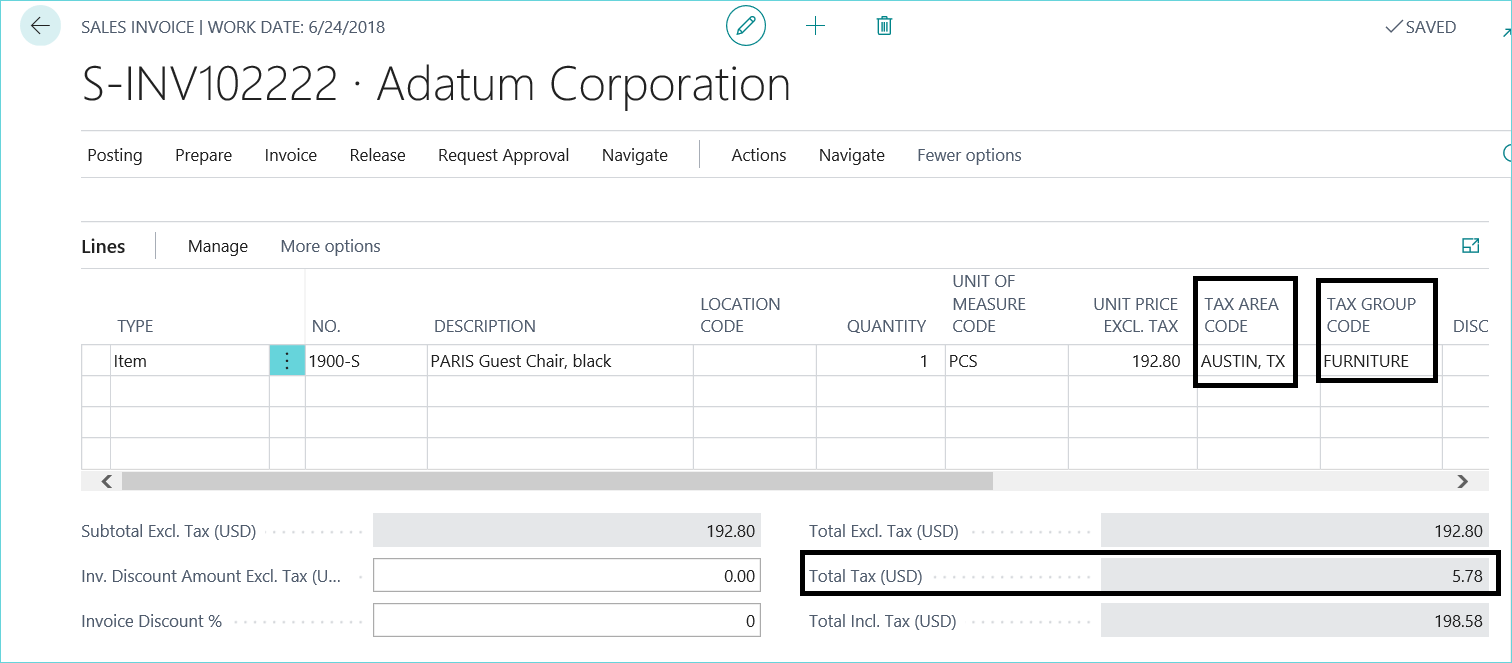
And that is all there is to setting up taxes in Dynamics 365 Business Central. If you have questions or need some assistance, visit our support page for more help.
